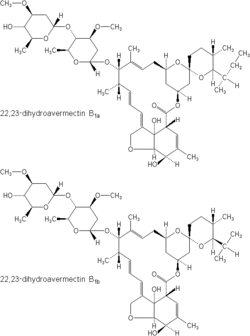Drug curbs river blindness
Ivermectin, an antiparasitic drug used primarily in domestic animals, can significantly reduce the spread of a devastating human disease called onchocerciasis or river blindness, according to a study conducted on a West African rubber plantation.
The disease currently affects about 18 million people in tropical regions, where it spreads through the bite of blackflies that breed in river water. The flies transmit the immature, thread-like forms, or microfilariae, of the parasitic worm Onchocerca volvulus, which migrate through the skin and can eventually invade the eyes, causing blindness.
Ivermectin emerged as a promising weapon in the fight against river blindness several years ago (SN: 10/31/87, p.287), but the new study is the first to demonstrate its benefits in an entire community, the researchers say. For three years starting in 1987, a team from the University of Alabama at Birmingham and the Johns Hopkins University in Baltimore administered a yearly ivermectin dose to each of the 14,000 residents of a Liberian rubber plantation except pregnant women, very small children and people with serious illnesses. At the end of the study period, skin samples showed that the average number of microfilariae had dropped by 84 percent, they report in the Oct. 5 SCIENCE.
Ivermectin doesn't affect adult O. volvulus, explains Beatriz Munoz of Hopkins, but it does kill microfilariae, easing symptoms of intense itching and presumably helping to preven eye damage. Moreoever, the drugs slows disease spread because blackflies pick up fewer microfilariae when they bite an infected person, says Alabama's Bruce M. Greene.
Because 90 percent of adult residents already carried the parasite when the study began, the researchers focused on 5-year-olds to gauge the rate of new infection. Among these children, the three-year treatment program reduced the incidence of new infection by 21 percent, they report.
COPYRIGHT 1990 Science Service, Inc.
COPYRIGHT 2004 Gale Group



